Fair Pay for Artists
Based on the evidence revealed by NAVA's 2016 survey of art industry practices around the country, NAVA has renewed its campaign to gain recognition of a group of rights for artists and other art professionals.
Based on the evidence revealed by NAVA's 2016 survey of art industry practices around the country, NAVA has renewed its campaign to gain recognition of a group of rights for artists and other art professionals.
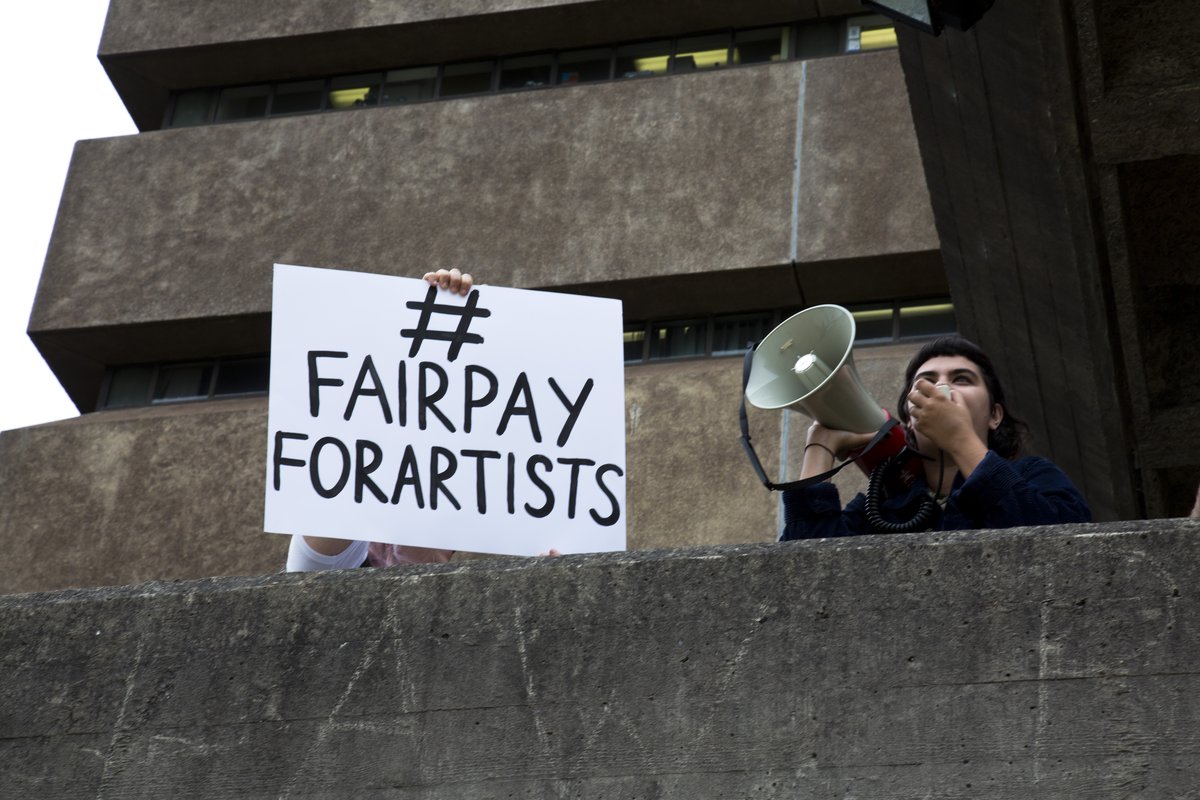
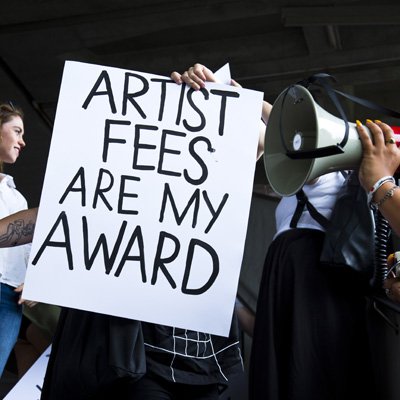
Photo: Tanja Bruckner, 2017
Artists' fees are a payment for the time, ideas, labour and skills that an artist expends in creating works and making them available to the public. This does not include payments for the production costs of commissioned work or for works loaned for an exhibition.
Currently, many artists are being underpaid or are often working for free. Whilst everyone around them is being paid artists are often told that they will get exposure. Industrial fairness requires this change.
NAVA sets the recommended fee scales for artists in its Code of Practice for the Professional Australian Visual Arts, Craft and Design Sector. These best practice standards should be the minimums benchmarks paid by all galleries and organisations engaging with artists and arts workers. To make sure this happens NAVA is calling for:
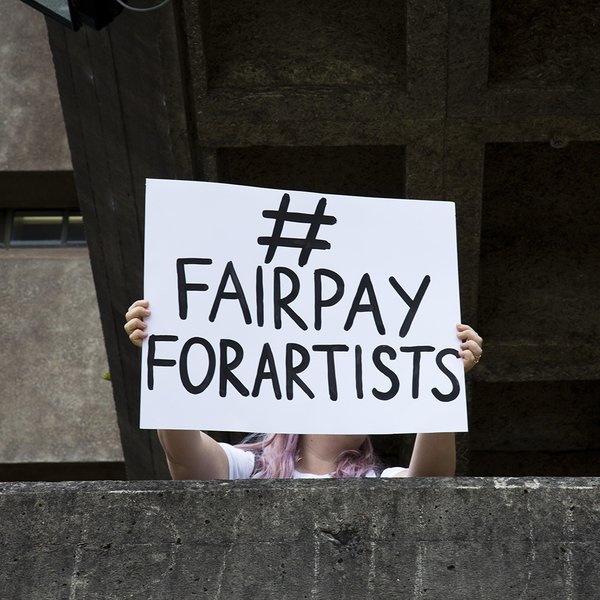
Artists find it almost impossible to get their professional status as an artist recognised by Centrelink when they require assistance.
If they do receive benefits, they risk losing those when they receive an artist fee, materials or production fee, a grant or scholarship, or when they win an art prize. However, these types of payments are likely to be a ‘one-off’ for the creation or presentation of artwork, rather than a contribution to living expenses.
NAVA is therefore calling for Centrelink to adopt an annual averaging process for income from artists’ fees and awards similar to ways this type of income is handled by the ATO under the Tax Ruling: carrying on business as a professional artist.
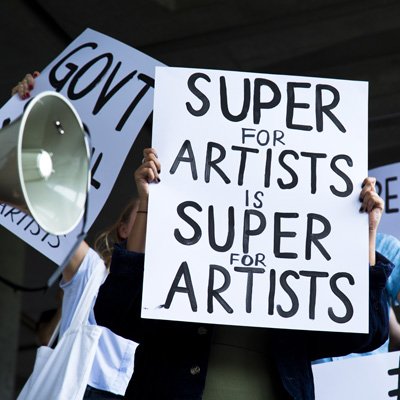
Photo: Tanja Bruckner, 2017
Like other working people, artists and other art professionals need superannuation in order to have some retirement income in their old age.
NAVA supports the principle of industrial fairness and encourages the arts sector to ensure super contributions for artists are made when commissioning or loaning works.
For arts employers it is important to know that for some contractors working in the arts, superannuation is a requirement. Contractors may be deemed to be employees for superannuation purposes and the employer may be required to make superannuation contributions on their behalf. Read NAVA’s factsheet on superannuation contribution to check you are meeting your obligations.
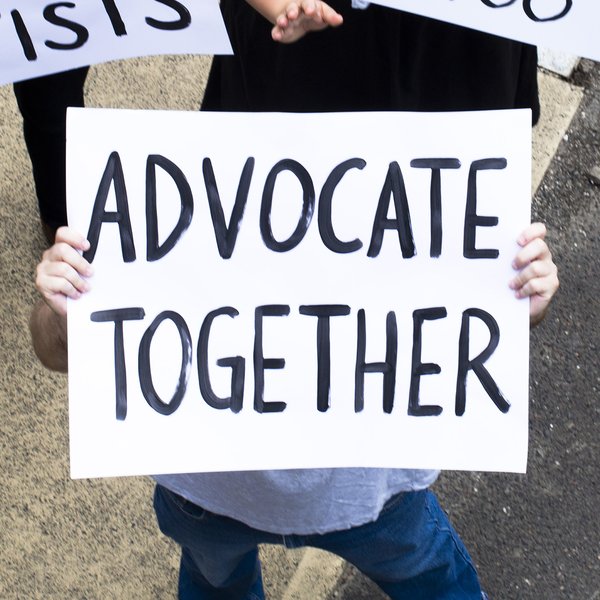
The Tax Ruling: carrying on business as a professional artist (TR 2005/1) came into effect in January 2005 after an eight year campaign led by NAVA.
This ruling recognises that arts businesses typically have different characteristics to other businesses. For income tax purposes, artists who can demonstrate that they are 'in business' as a professional rather than a hobbyist, are able to claim their art practice expenses against all forms of income. This also means that artists are required to declare all sources of income, including grants, awards and prizes.
NAVA understands that artists incomes are often low and winning awards and prizes is a rare opportunity. So NAVA is recommending any government grants, fellowships, scholarships, awards and prizes for artists should be tax exempt. NAVA will continue to push for the adoption of this recommendation as part of our Fair Pay for Artists campaign.
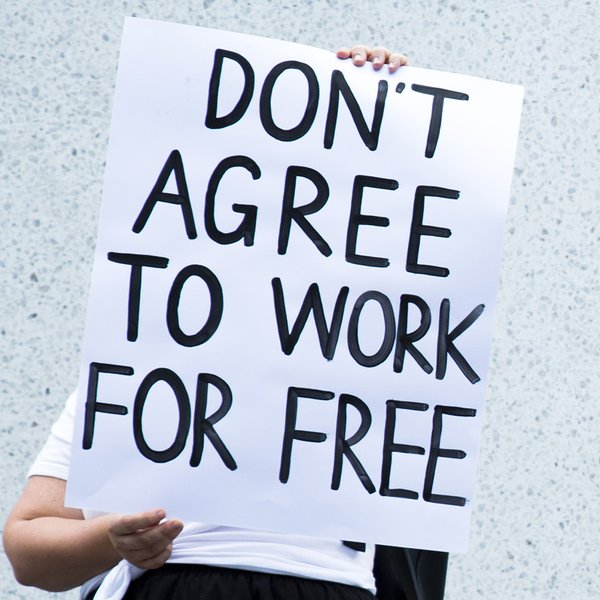
NAVA's recent S2M Report found that in 2016, 7,772 volunteers provided over 278,000 hours of volunteer time, worth $17 million to the Australian small-to-medium visual arts sector.
NAVA understands the tight constraints faced by organisations in delivering ambitious programs with limited resources, but stresses that the relationship between organisation and volunteer or intern must be mutually beneficial. Generally, an internship must be an educational exchange.
The Fair Work Ombudsman’s position on unpaid internships is that:
Key characteristics of a genuine volunteering arrangement include:
For more information of what is / is not acceptable for volunteers and interns see NAVA's guides below.
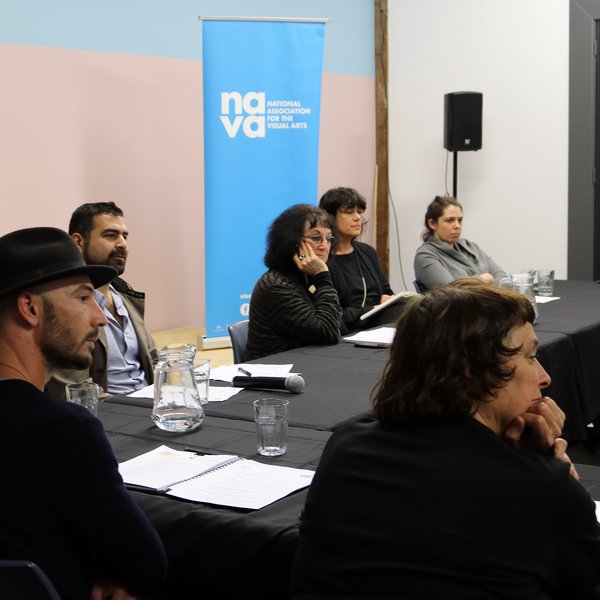
NAVA is only too aware of the financial pressures on the arts sector, exacerbated as the result of all the funding cuts. We recently conducted a series of sector discussions about visual arts professionals’ fees and superannuation.
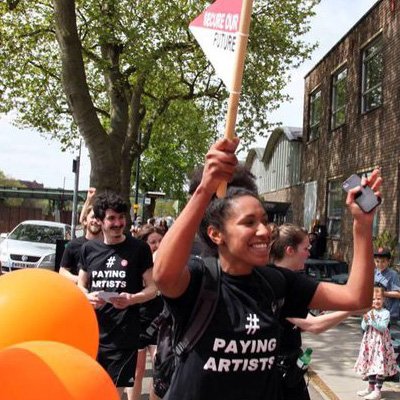
Libita Clayton takes part in Bristol relay race, Paying Artists Campaign, May 2015. Photo: Richard Broomhall.
United Kingdom
a-n The Artists Information Company has published survey findings about artists' experience of exhibiting in publicly funded galleries in the UK and is undertaking a campaign 'Paying Artists' to ensure the payment of artists' fees.
Sweden and Norway
There are good models in Scandinavia. In 2009, the Swedish government adopted a new agreement for remuneration to artists for the display of work. In Norway, artists receive a two-fold 'compensation' for the exhibition of their works, one for exhibiting, and the second to compensate their lack of access to using or selling their artwork during the time of exhibition. They are paid according to the number of works and duration of the exhibition.
Canada
In Canada, artists' rights for payment when their work is used in exhibitions are legally enshrined.
More information on international comparisons can be found as support material for NAVA's 10 Key Recommendations for National Arts Policy.
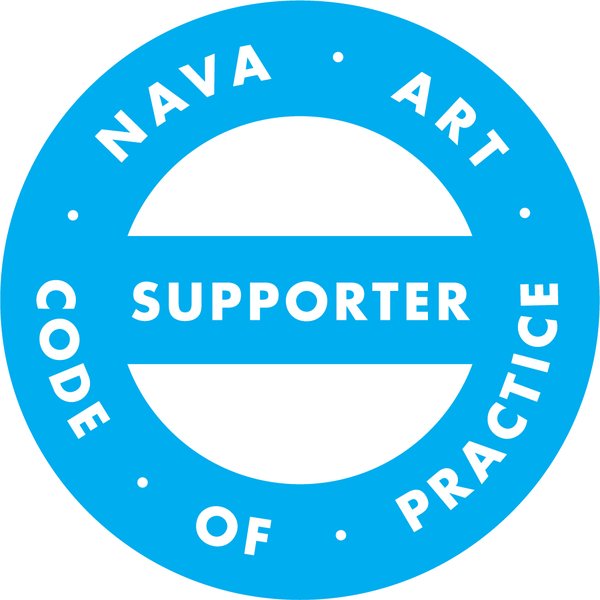
One of NAVA’s recommendations for all arts policies is that there be a binding requirement by the federal government through the Australia Council and all state and territory governments that fees be paid by all government funded organisations to artists who have been commissioned or have loaned works for exhibition. These fees must be paid at least at the minimum recommended rates specified in the NAVA Code of Practice for the Professional Visual Arts, Craft and Design Sector.
As we continue to lobby for adherence to fair industrial practices in the visual arts sector, we have launched the NAVA Code of Practice Supporter stamp in recognition of organisations who comply with NAVA’s best practice standards as set out in the code.
Sign up to demonstrate your commitment to a fair and equitable sector. Participating organisations can use this logo in their online and print communication eg. website, wall text etc.
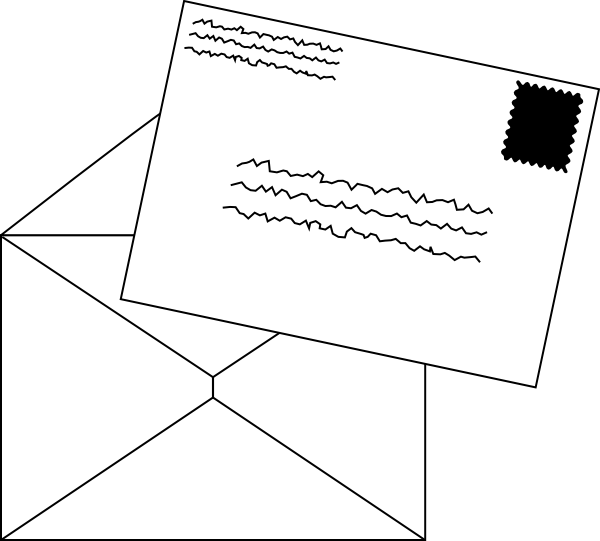
Arts sector representatives are being urged to send letters the three major parties asking for their support as well as to their local member. Follow these links for contact details:
- your Senate representative
- your local member
- Senator the Hon Mitch Fifield, Minister for the Arts minister@communications.gov.au
Letters have already been sent by NAVA requesting meetings.
Letters should also be sent to the Australia Council and state/territory arts funding authorities asking them to make paying artists’ fees mandatory for all grant recipients.
Editable letter templates are provided below so you can add your own thoughts and stories.
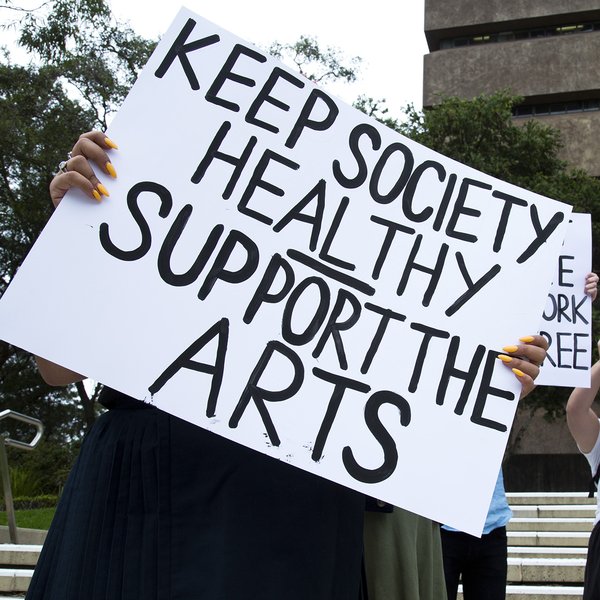
Your support will directly contribute to this ongoing work and assist NAVA with research. Donations are tax-deductible.
NAVA consulted with a number of lawyers and superannuation experts to resolve the grey areas of when superannuation contributions should be paid for artists working in galleries or other arts organisations in various capacities.